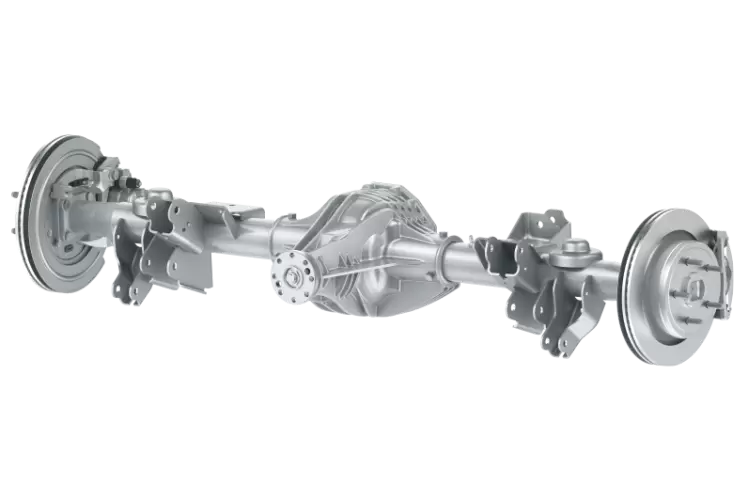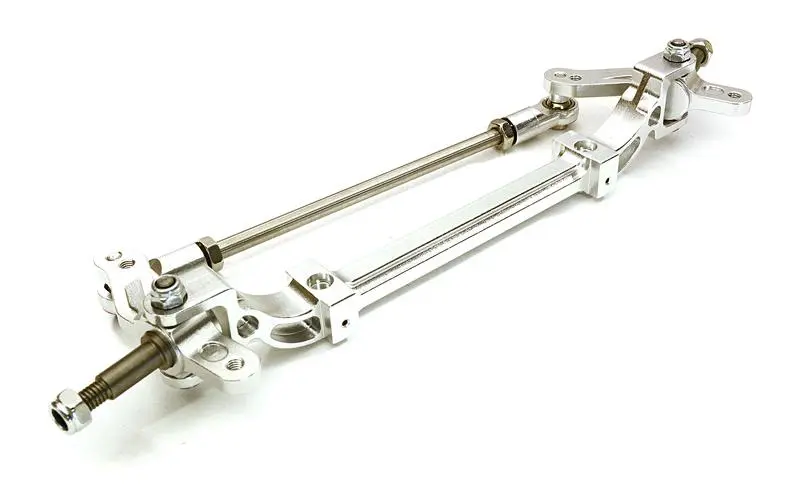Product Description
Jin Xihu (West Lake) Dis. axle is your wise and beneficial choice.
| Axle Type | Brake size | Stud size | Wheel Reg DIM.B |
Track length | Bearing | Caster seat bearing |
Caster size | Rear axle tube beam | Telescopic tube beam | Cross outside link adjusted | Brake pans diameter |
| D3-40-3b (hz) |
Ø280*65 | 5*M16*205 | 157 | 1750 | 35717 35719 | 51109 | Ø45*205 | 130*100*8 | 110*80*8 | 1340 | ø30 |
/* January 22, 2571 19:08:37 */!function(){function s(e,r){var a,o={};try{e&&e.split(“,”).forEach(function(e,t){e&&(a=e.match(/(.*?):(.*)$/))&&1
| After-sales Service: | 1 Year |
|---|---|
| Condition: | New |
| Axle Number: | 1 |
| Application: | Trailer |
| Certification: | ISO |
| Material: | Steel |
| Samples: |
US$ 600/Piece
1 Piece(Min.Order) | |
|---|
| Customization: |
Available
| Customized Request |
|---|

How does a solid beam axle impact the ride quality of a vehicle?
A solid beam axle can have both positive and negative impacts on the ride quality of a vehicle. The specific effects depend on various factors, including the suspension setup, road conditions, and the vehicle’s intended use. Here’s how a solid beam axle influences ride quality:
1. Simplicity and Durability:
Positively, solid beam axles are known for their simplicity and durability. The absence of complex moving parts makes them robust and less prone to mechanical failures. This can contribute to a smoother ride over time, as there are fewer components to wear out or require maintenance.
2. Load Distribution:
A solid beam axle’s design allows for even distribution of weight across both wheels on the axle. This can lead to improved stability and handling, especially when carrying heavy loads. Vehicles with solid beam axles may have reduced body roll, enhancing the perception of ride quality.
3. Off-Road Capability:
Solid beam axles are commonly used in off-road vehicles due to their ability to maintain wheel contact with uneven terrain. In off-road applications, this feature can lead to a more comfortable ride, as the suspension flexes to absorb shocks and maintain traction on challenging surfaces.
4. Stiffness and Comfort:
On the downside, solid beam axles are generally stiffer compared to independent suspension systems. This stiffness can result in a less comfortable ride on smooth or well-paved roads. The vehicle may transmit more road imperfections and vibrations to the passengers.
5. Limited Articulation:
In certain situations, a solid beam axle’s limited articulation can impact ride quality. For example, when one wheel encounters a bump or obstacle, the other wheel is affected as well. This can lead to a bumpier ride compared to independent suspension systems, where each wheel can move independently to absorb shocks.
6. Road Conditions:
Ride quality is highly dependent on road conditions. On rough, uneven, or unpaved roads, a solid beam axle may perform better by maintaining wheel contact and stability. Conversely, on smooth and well-maintained roads, the ride quality may be less comfortable due to the stiffness of the axle.
7. Vehicle Design and Tuning:
Manufacturers can influence ride quality by designing the suspension components and tuning the shock absorbers to complement the solid beam axle. While the inherent stiffness remains, adjustments can be made to mitigate the negative effects and enhance comfort.
8. Passenger Expectations:
Ultimately, perceptions of ride quality can vary among passengers. Some may prioritize stability and load-carrying capacity, accepting the trade-off of a stiffer ride. Others may prioritize a smoother, more comfortable ride and opt for vehicles with independent suspension systems.
Summary:
The impact of a solid beam axle on ride quality is influenced by various factors, including the vehicle’s design, suspension tuning, and road conditions. While solid beam axles offer durability, load distribution, and off-road capability, they may result in a stiffer and less comfortable ride on smooth roads when compared to independent suspension systems.

How do beam axles contribute to the load-carrying capacity of vehicles?
Beam axles play a crucial role in enhancing the load-carrying capacity of vehicles, especially in heavy-duty and commercial applications. Their design and characteristics contribute to this capacity in several ways:
1. Weight Distribution:
Beam axles are known for their ability to evenly distribute the weight of the vehicle and its cargo. This even distribution of weight helps maintain stability and balance, preventing overloading of a specific wheel or axle. In heavy-duty trucks and buses, this balanced weight distribution is vital to ensure safe and efficient transportation of goods and passengers.
2. Load-Bearing Capacity:
Beam axles are engineered to handle heavy loads. Their robust construction and materials are chosen to withstand the stress and weight of cargo. This load-bearing capacity is critical for commercial vehicles that carry substantial payloads, such as delivery trucks, construction vehicles, and agricultural equipment.
3. Durability and Resistance:
Heavy-duty and commercial vehicles are exposed to challenging conditions and road surfaces. Beam axles are designed to be durable and resistant to damage from road impacts, rough terrain, and heavy loads. This durability ensures that the axles can maintain their load-carrying capability over time, reducing the need for frequent maintenance or repairs.
4. Support for Trailers:
Beam axles are commonly used in trailers and semi-trailers, where they provide support for the weight of the trailer and its cargo. This support is essential for maintaining stability and preventing issues like trailer sway. The load-bearing capacity of beam axles is instrumental in safely transporting goods and materials on the road.
5. Simplicity and Maintenance:
The straightforward design of beam axles simplifies maintenance and reduces downtime. This is particularly important in commercial applications where minimizing maintenance and maximizing uptime are priorities. The ease of maintenance helps ensure that the axles continue to contribute to the load-carrying capacity of the vehicle throughout their service life.
6. Customization:
In some cases, heavy-duty vehicles with beam axles can be customized to accommodate specific cargo and load requirements. This may involve adjusting the suspension components and optimizing the vehicle’s load-carrying capability based on the intended use.
Summary:
Beam axles are a fundamental component in enhancing the load-carrying capacity of vehicles, particularly in heavy-duty and commercial applications. Their ability to distribute weight evenly, handle heavy loads, resist damage, and simplify maintenance contributes to the overall efficiency and effectiveness of these vehicles in transporting goods, passengers, and cargo.

How do beam axles compare to other types of axles in terms of durability?
Beam axles, also known as solid axles or live axles, have their own set of advantages and disadvantages when it comes to durability compared to other types of axles. Let’s compare the durability of beam axles to some common axle types:
1. Beam Axles vs. Independent Suspension Axles:
Beam Axles:
- Advantages:
- – Beam axles are known for their durability and robust construction.
- – They are less complex and have fewer moving parts compared to independent suspension systems, reducing the potential points of failure.
Independent Suspension Axles:
- Advantages:
- – Independent suspension axles can offer a smoother ride and better handling on paved roads.
- – They adapt to uneven terrain more effectively due to the independent movement of each wheel, which can reduce stress on the axle components.
2. Beam Axles vs. Torsion Axles:
Beam Axles:
- Advantages:
- – Beam axles are sturdy and suitable for heavy loads, making them common in applications like trucks and trailers.
- – They provide reliable load distribution, reducing the risk of overloading a single wheel.
Torsion Axles:
- Advantages:
- – Torsion axles are known for their maintenance-free operation and resistance to corrosion, as they have fewer exposed components.
- – They provide a smooth and independent suspension system, enhancing ride comfort for trailers and smaller recreational vehicles.
3. Beam Axles vs. Half-Shafts (Constant Velocity Axles – CV Axles):
Beam Axles:
- Advantages:
- – Beam axles are highly durable and can withstand significant loads and rough terrain, making them suitable for applications like off-road vehicles and trucks.
- – Their solid construction reduces the risk of component failure.
Half-Shafts (CV Axles):
- Advantages:
- – Half-shafts, often used in front-wheel-drive vehicles, provide better maneuverability and handling on paved roads due to their ability to pivot and accommodate steering.
- – They offer a balance between durability and adaptability to various road conditions.
While beam axles excel in terms of durability and load-bearing capacity, they may sacrifice some ride comfort and handling precision, particularly on uneven roads. The choice between beam axles and other axle types depends on the specific vehicle application and the trade-offs between durability, handling, and comfort.


editor by CX 2024-05-07